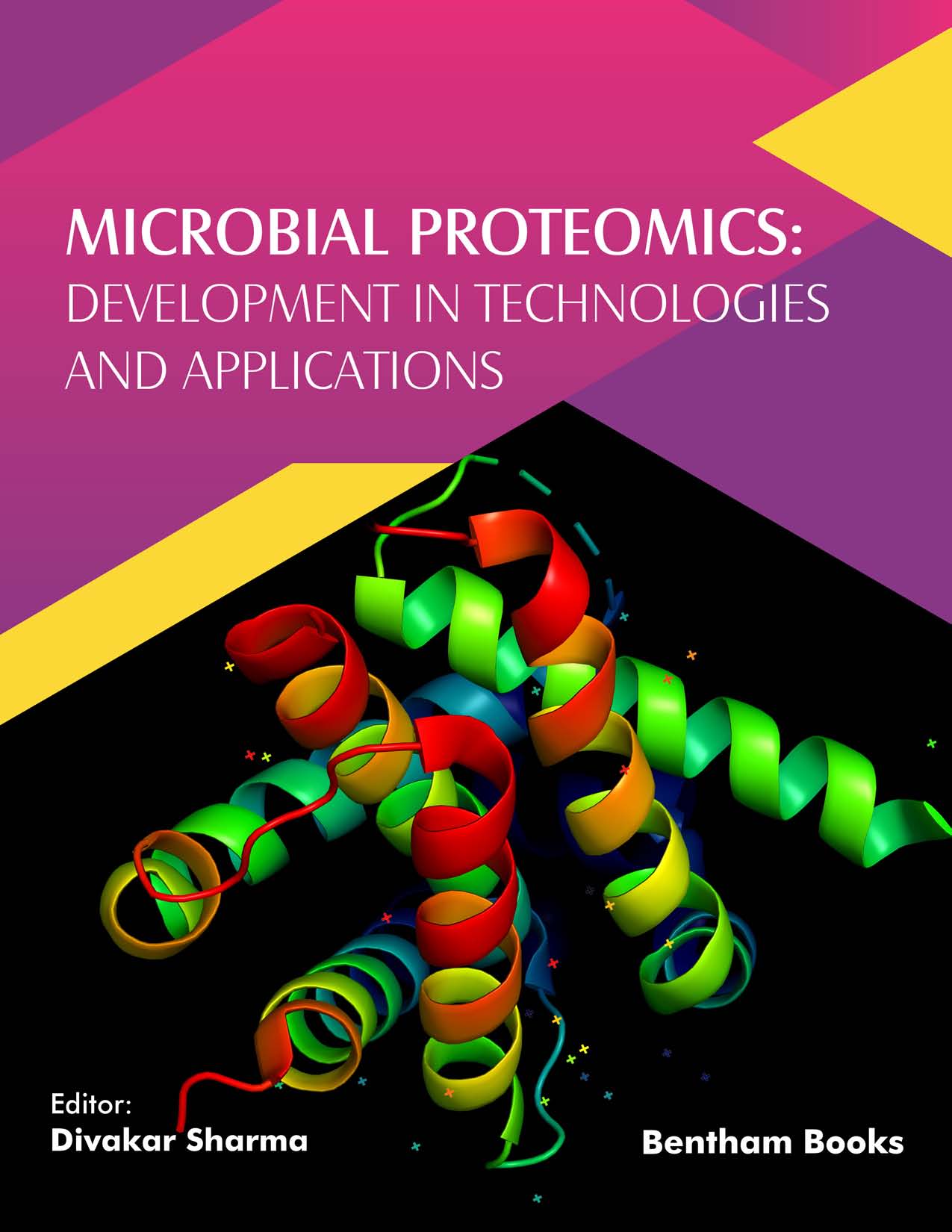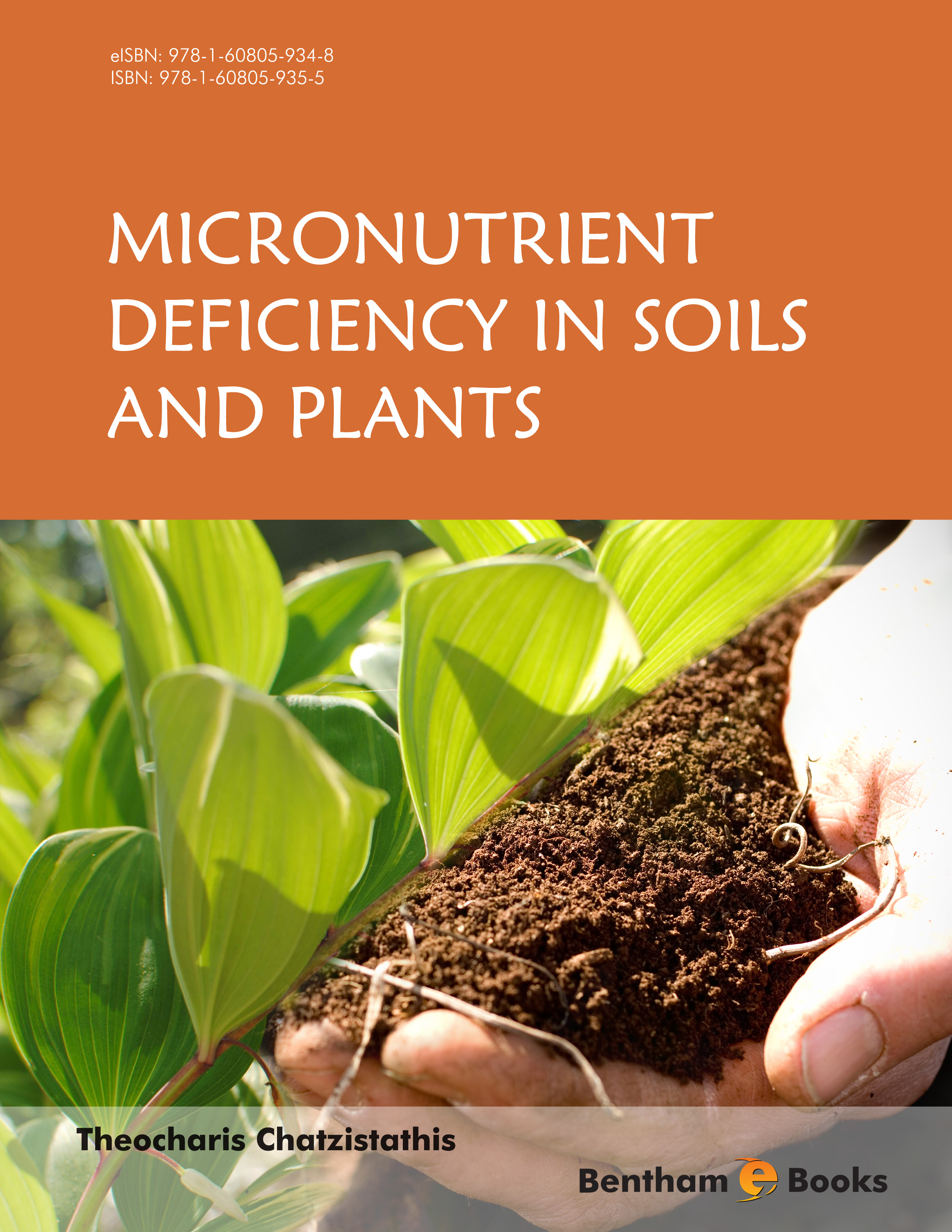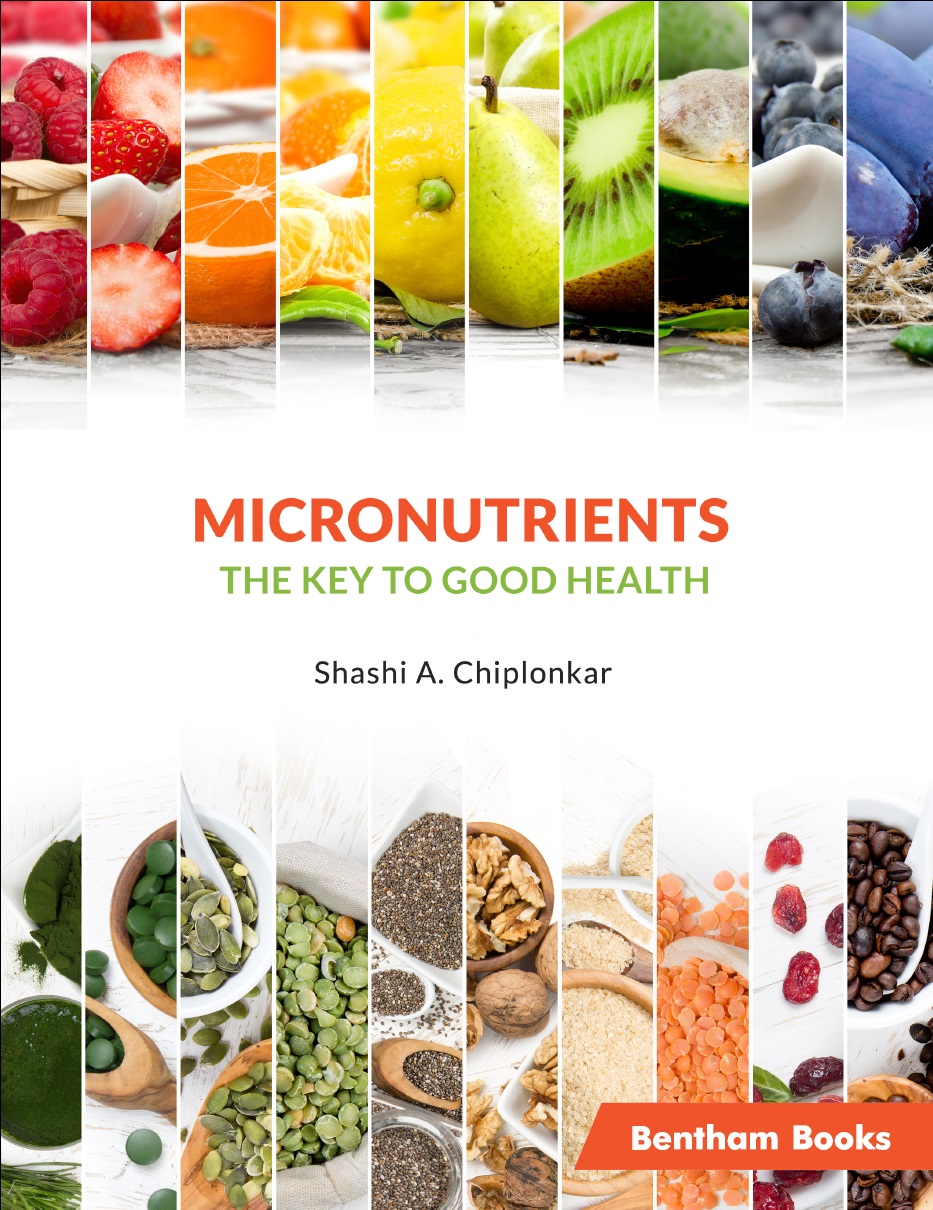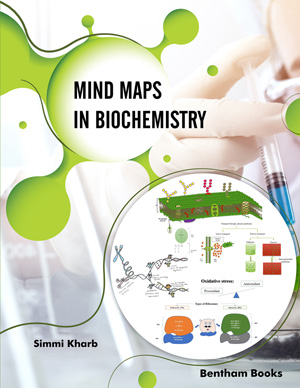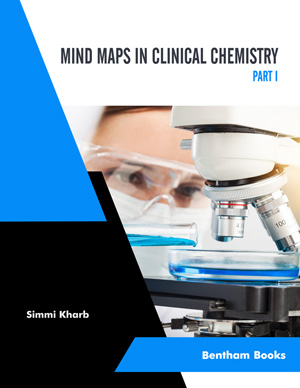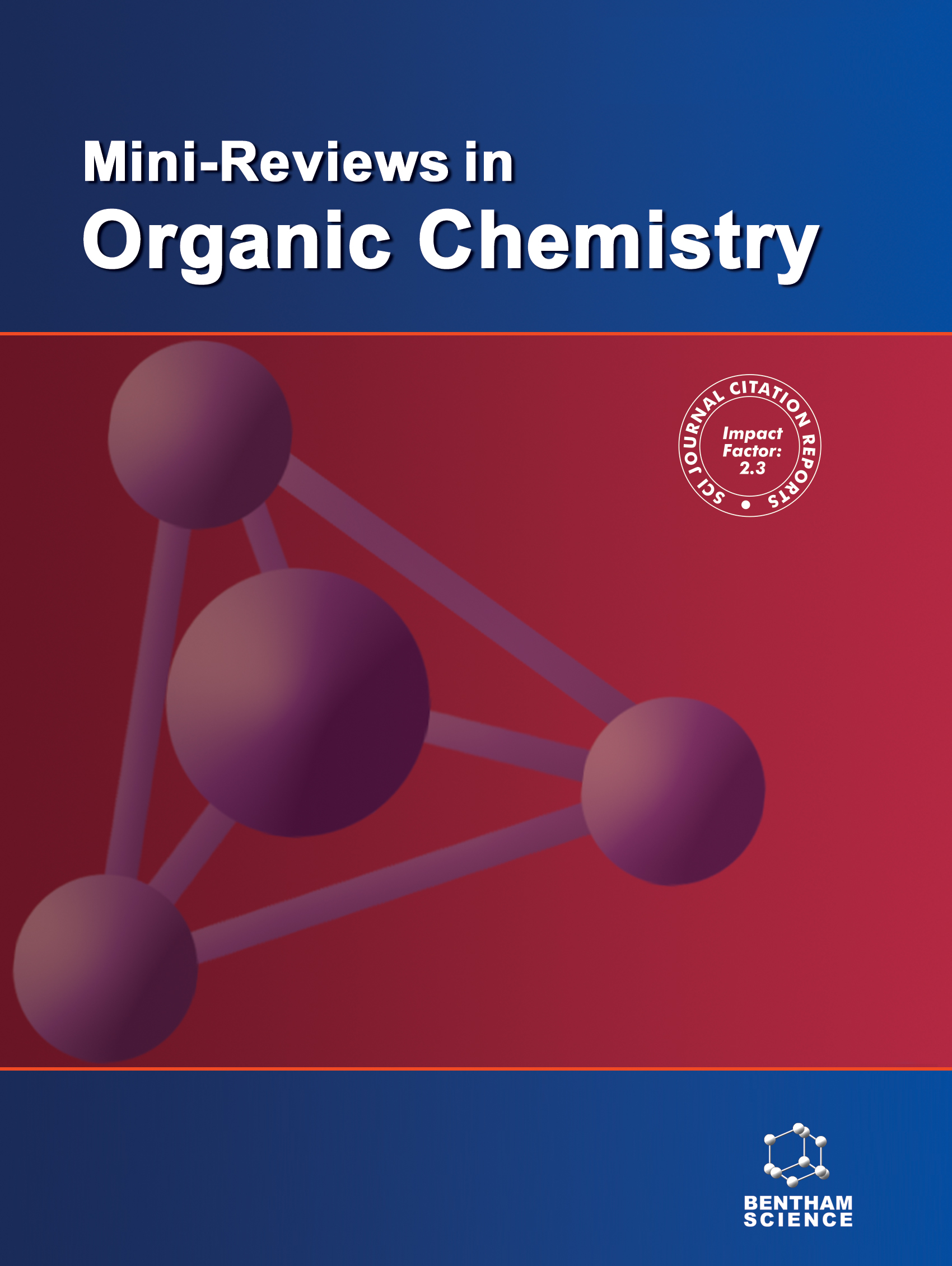Bentham Science Publishers
Bentham Science Publishers is a major publisher of more than 100 peer-reviewed science, technology and medical (STM) journals, along with a rapidly growing collection of eBooks. Since 1993, Bentham Science Publishers has been catering to the information needs of the pharmaceutical, engineering, biomedical and medical research community.1121 - 1140 of 1788 results
-
-
MicroRNA
More LessMicroRNA publishes letters, full-length research, review articles, drug clinical trial studies and thematic issues on all aspects of microRNA (miRNA) research. The scope of the journal covers all experimental miRNA research and applied research in health and disease, including therapeutic, biomarker, and diagnostic applications of MiRNA.
-
-
-
MicroRNAs and Cardiovascular Disease
More LessMicro RNAs (miRNAs) are known to play an important role in gene expression regulation. Owing to their ever-increasing implications in the control of various biological and pathological processes, miRNAs have now been considered novel biomarkers of various human diseases including, cancer, viral disease, cardiovascular disorders, metabolic disturbances, etc. Unique expression profiles have been associated with specific pathological states.
Cardiovascular disease is among the main causes of mortality in developed countries. The pathological process of the heart is associated with altered expression profile of genes that are important for cardiac function. The implications of miRNAs in the pathological process of the cardiovascular system have recently been recognized, and the research on miRNAs in relation to cardiovascular disease is now in rapid progress. The aim of this ebook is to present updated research on the subject with analyses from published reports. Micro RNAs and Cardiovascular Disease caters to the growing interest and information needs of cardiac clinicians and gene expression researchers.
-
-
-
Microalgae as a Source of Bioenergy: Products, Processes and Economics
Recent Advances in Renewable Energy: Volume 1
More LessMicroalgae could play an important role in the achievement of sustainability goals related to the generation of renewable energy and greenhouse gas (GHG) emissions. These photosynthetic microorganisms are able to capture CO2 and, therefore, can be used to produce biofuels such as ethanol, methane and green diesel. Other factors, such as their high growth rate, ability to use wastewater as a culture medium and the ability to grow on non-arable land makes them a potentially economical source of biofuel production on a large scale.
This monograph introduces the reader to the basic and applied science of microalgal biofuel production. Chapters in the volume give information about bioethanol and biogas production from microalgal sources, the fermentation process, optimization of culture parameters and industrial applications of biomass projects.
The book is a useful reference for biotechnology and environmental science graduates and professionals interested in biofuel production.
-
-
-
Microbes as Agents of Change for Sustainable Development
Microbes and Microbiomes for Clean and Green Environment: Volume 2
More LessMicrobes as Agents of Change for Sustainable Development explores the pivotal role of microbes and microbiomes in restoring degraded ecosystems and advancing sustainable practices. This comprehensive resource bridges cutting-edge research and practical solutions, emphasizing microbial applications in ecosystem restoration, renewable energy, waste management, agriculture, and climate change mitigation.
The book, which spans 22 chapters, provides insights into topics like nutrient cycling, bioremediation, biofertilizers, and microbial genomics. It also highlights innovative approaches, such as microbial fuel cells, pollution monitoring with biosensors, and the role of microbes in GHG emission mitigation.
Key Features:
- Explores the UN Decade on Ecosystem Restoration and the socio-economic benefits of microbes.
- Discusses microbial roles in polluted ecosystem restoration and renewable energy production.
- Highlights microbes` contribution to sustainable agriculture, waste management, and climate action.
-
-
-
Microbial Biopolyester Production, Performance and Processing Bioengineering, Characterization, and Sustainability
Recent Advances in Biotechnology: Volume 2
More LessGlobal plastic production is estimated to be over 300Mt annually. Most conventional plastics are predominantly produced from fossil fuels and are highly resistant to biodegradation, and only a small share of about 20% of spent plastics is believed to be recycled, which is a cause for environmental concern. Biodegradable plastics would solve this concern as they are a sustainable alternative, yet these do not even cover 5% of the global plastic market.
Microbial polyhydroxyalkanoates (PHAs) are a versatile group of polyesters produced by nature as prokaryotic storage materials. PHAs can be produced through sustainable bioprocess engineering and have displayed remarkable flexibility in their physical and chemical properties. PHAs are the subject of several scientific papers and numerous PHA patents have also been filed, generating significant interest in the plastic production industry.
To develop overall sustainable and efficient production processes, all bioprocess steps need to be thoroughly understood and accounted for. These processes start with the selection of suitable inexpensive raw materials (microbes and enzymes), optimizing the process engineering and process regime, and conclude with the enhancement of product recovery in terms of time, energy, and material input.
Microbial Biopolyester Production, Performance and Processing: Bioengineering, Characterization, and Sustainability is a compilation of eight chapters covering bacterial polyesters, green plastics and PHAs from various angles. The contents of this volume focus on sustainable practices focus on the sustainability of processes that involve the synthesis and recycling of these meterials. The volume is a useful resource for bioprocess engineers, microbiologists, biotechnologists and chemical engineers interested in the basics of biodegradable plastic production.
-
-
-
Microbial Biopolyester Production, Performance and Processing Microbiology, Feedstocks, and Metabolism
Recent Advances in Biotechnology: Volume 1
More LessGlobal plastic production is estimated to be over 300Mt annually. Most conventional plastics are predominantly produced from fossil fuels and are highly resistant to biodegradation, and only a small share of about 20% of spent plastics is believed to be recycled, which is a cause for environmental concern. Biodegradable plastics would solve this concern as they are a sustainable alternative, yet these do not even cover 5% of the global plastic market.
Microbial polyhydroxyalkanoates (PHAs) are a versatile group of polyesters produced by nature as prokaryotic storage materials. PHAs can be produced through sustainable bioprocess engineering and have displayed remarkable flexibility in their physical and chemical properties. PHAs are the subject of several scientific papers and numerous PHA patents have also been filed, generating significant interest in the plastic production industry.
To develop overall sustainable and efficient production processes, all bioprocess steps need to be thoroughly understood and accounted for. These processes start with the selection of suitable inexpensive raw materials (microbes and enzymes), optimizing the process engineering and process regime, and conclude with the enhancement of product recovery in terms of time, energy, and material input.
Microbial Biopolyester Production, Performance and Processing: Microbiology, Feedstocks, and Metabolism encompasses eight chapters that cover aspects of the microbiology and biotechnology of producing biodegradable plastics. The contents focus on the selection of powerful archaeal and eubacterial production strains, genetic engineering as a tool for optimized PHA production and inexpensive carbon sources for microbial cultures. The volume is a useful resource for bioprocess engineers, microbiologists, biotechnologists and chemical engineers interested in the basics of biodegradable plastic production.
Recent Advances in Biotechnology is a book series comprising of peer-reviewed reference works and monographs that compile the latest developments in the field of biotechnology. Each volume has a thematic focus and features topical reviews written by experts. The series will highlight multidisciplinary perspectives to interested readers (biotechnologists, microbiologists, bioprocess engineers, agronomists, medical professionals, sustainability researchers etc.)
-
-
-
Microbial Proteomics: Development in Technologies and Applications
Current and Future Developments in Proteomics: Volume 1
More LessThis volume brings current knowledge of proteomics technologies and related developments with special reference to diseases caused by microbes. The editor has compiled chapters written by expert academicians which distill the information about useful methods in microbial proteomics for the benefit of readers. Chapters cover several methods used to investigate the microbial proteome and special topics such as antimicrobial drug resistance mechanisms, biomarker developments, post translational modifications.
Key Features:
-overview of several biochemical methods in proteomics
-full-color, high quality images of the most frequent technologies and applications
-concise, well organized, and didactic format
-updates in basic applied information
-bibliographic references
-information on proteomics for tuberculosis treatment
This reference work is intended for researchers seeking information on laboratory techniques applied in proteomics research and microbiology.
-
-
-
Microbiology for ICAR NET: A Comprehensive Exam Preparation Guide
More LessMicrobiology for ICAR NET: A Comprehensive Exam Preparation Guide is a valuable resource tailored for students preparing for the ICAR NET exam in Microbiology. This guide offers an in-depth overview of key microbiological topics, including microbial physiology, soil microbiology, environmental microbiology, and microbial biotechnology. Organized into eight comprehensive chapters, the book covers foundational concepts such as the scope of microbiology, prokaryotes, and microscopy, while aligning closely with the ICAR NET syllabus.
Ideal for ICAR NET aspirants, this guide also serves as a solid review tool for microbiology students, researchers, and professionals.
Key Features:
- Includes multiple-choice, true/false, and fill-in-the-blank questions for active learning.
- Detailed answer key for self-assessment and concept reinforcement.
- Comprehensive coverage of topics essential for ICAR NET Microbiology exam preparation.
- Covers a wide range of microbiology topics.
-
-
-
Micronutrient Deficiency in Soils and Plants
More LessMicronutrient Deficiency in Soils and Plants highlights the problems caused by micronutrient deficiencies in vegetative production. This eBook emphasizes on the necessary requirements for plant growth micronutrients, the vital deficiency symptoms of micronutrients and their crucial role in plant metabolism.
The scope of this eBook covers a range of topics including micronutrient deficiency, the availability of micronutrient in soils, plant metabolism and micronutrient solubility.
The contents of this eBook include chapters on micronutrient solubility and availability in soils, the role of micronutrients in plant metabolism and growth and diagnostic tools to assess deficiencies of iron, zinc, copper and other micro-nutrients.
Micronutrient Deficiency in Soils and Plants is a valuable resource for MSc and PhD students, academic personnel and researchers seeking updated and critically important information on major nutritional problems in agricultural soils and crops.
-
-
-
Micronutrients: The Key to Good Health
More LessMicronutrients, which comprise minerals and vitamins, are essential for a variety of biological processes such as growth, immune response, regulation of gene expression and cognitive functions. Micronutrients: The Key to Good Health presents key information about the causes, signs and symptoms of micronutrient deficiencies along with remedial dietary measures. The book also provides authentic knowledge of the nature, structure and metabolic functions of vitamins and essential minerals in a reader-friendly manner. The aim of the book is to provide comprehensive knowledge about micronutrients and their role in a balanced diet for maintaining personal health.
Key features:
- Covers the basics of nutrition and the importance of micronutrients in health over 5 reader-friendly chapters
- Covers metabolic functions of micronutrients - Covers the development of micronutrient rich food products
- Includes information about micronutrient deficiencies with remedial dietary measures in terms of ready-to-eat food supplements in a precise manner
- Includes information about phytochemical nutrients, prebiotics and postbiotics
- Informs the reader about myths on micronutrients
- Includes several informative illustrations, tables and appendices on daily nutrient requirements, diet assessment and composition and much more,
This book serves as a ready reference for the health science students, public health workers, nutrition professionals, and health-conscious readers.
-
-
-
Microplastic Pollution: Causes, Effects and Control
More LessMicroplastic Pollution: Causes, Effects, and Control sheds light on the causes, effects, and control of microplastic pollution, providing valuable insights into the tools and techniques for analysis, the impact on ecosystems, and the potential risks to human well-being. The editors focus on the urgency of addressing this global environmental challenge through collaborative efforts and sustainable solutions. This reference features 10 edited chapters covering multiple aspects of microplastic pollution. The book introduces the reader to various tools and techniques used to analyze microplastic pollution in both aquatic and terrestrial ecosystems. It then examines the sources, pathways, and levels of microplastic contamination in the environment and explains how to evaluate the potential health risks for the nearby communities. The impact of microplastic on flora and fauna is presented in one chapter. To emphasize the importance of assessing microplastic contamination, the editors present a case study conducted in Thoothukudi, South India, to explore the implications of microplastic pollution on human health. The book also provides information on solutions to microplastic pollution including the use of bioplastics and removal techniques. Microplastic Pollution: Causes, Effects, and Control equips readers with a complete understanding of the global challenge of microplastics, fostering awareness and encouraging further research and action to protect our ecosystems and human health from their detrimental impact. It is an ideal handbook for environmental science researchers and students who need to understand microplastic pollution and plan environmental impact assessments for academic research and professional projects.
Key Features
- Comprehensive coverage of microplastic pollution with 10 structured chapters
- Informs readers about important parameters to understand and measure the impact of microplastics on local fauna, flora and the surrounding environment
- Covers evaluation and remediation of microplastics in both terrestrial and marine environments
- Includes references for advanced readers
- Includes a case study on the effect of microplastics in Thoothukudi, South India
-
-
-
Micropropagation of Medicinal Plants
More LessThis volume presents information about protocols for micropropagation of more than 40 species of medicinal plants. The contents combine knowledge about the scientific principles of micropropagation with state of the art updates in tissue culture techniques presented by plant scientists.
The readers will learn about techniques required to grow plants in challenging conditions that aim to reduce the impacts of injudicious harvesting, deforestation, climate change, pollution, urbanization and other factors that limit the ability to meet current demand. General topics such as biotization and pharmaceutical investigation are also included to guide readers about the significance of these plants in research and development for new medicines.
The book provides protocols for micropropagation of important medicinal plants like Rauvolfia serpentina, Catharanthus roseus, Withania somnifera, Tylophora indica, Bacopa monnieri, Aloe vera, Phyllanthus amarus, Allium sativum, Moringa oleifera, Operculina turpethum, Glycyrrhiza glabra, Pterocarpus marsupium, Vetiver grass, Ruta graveolens, Tinospora cordifolia, Kaempferia, Hedychium, Decalepis hamiltonii, Saraca asoca, Wrightia tinctoria, Wrightia arborea, Artemisia absinthium, Aegle marmelos, Atropa acuminata, Atropa belladonna, Alpinia species, Hedychium species, and Cissus species.
This book is a handy reference for medicinal chemists, horticulturists and pharmacists who want to learn about the growth and conservation of important medicinal herbs and plants.
-
-
-
Micropropagation of Medicinal Plants
Micropropagation of Medicinal Plants
More LessThis volume presents information about protocols for micropropagation of more than 40 species of medicinal plants. The contents combine knowledge about the scientific principles of micropropagation with state of the art updates in tissue culture techniques presented by plant scientists.
The readers will learn about techniques required to grow plants in challenging conditions that aim to reduce the impacts of injudicious harvesting, deforestation, climate change, pollution, urbanization and other factors that limit the ability to meet current demand. General topics such as biotization and pharmaceutical investigation are also included to guide readers about the significance of these plants in research and development for new medicines.
The book provides protocols for micropropagation of important medicinal plants like Rauvolfia serpentina, Catharanthus roseus, Withania somnifera, Tylophora indica, Bacopa monnieri, Aloe vera, Phyllanthus amarus, Allium sativum, Moringa oleifera, Operculina turpethum, Glycyrrhiza glabra, Pterocarpus marsupium, Vetiver grass, Ruta graveolens, Tinospora cordifolia, Kaempferia, Hedychium, Decalepis hamiltonii, Saraca asoca, Wrightia tinctoria, Wrightia arborea, Artemisia absinthium, Aegle marmelos, Atropa acuminata, Atropa belladonna, Alpinia species, Hedychium species, and Cissus species.
This book is a handy reference for medicinal chemists, horticulturists and pharmacists who want to learn about the growth and conservation of important medicinal herbs and plants.
-
-
-
Mind Maps in Biochemistry
More LessMind Maps in Biochemistry presents a series of concept and knowledge maps about biochemical compounds, systems and techniques. The book illustrates the relationships between commonly used terms in the subject to convey the meaning of ideas and concepts that facilitate a basic understanding about the subject for readers.
Chapters of the book cover both basic topics (lipids, carbohydrates, proteins, nucleotides, enzymes, metabolic pathways, nutrition and physiology) as well as applied topics (clinical diagnosis, diseases, genetic engineering and molecular biology).
Key Features
i. Topic-based presentation over 16 chapters
ii. Coverage of basic and applied knowledge
iii. Detailed tables, flow diagrams and illustrations with functional information about metabolic pathways and related concepts
iv. Essay and multiple-choice questions with solutions
v. Exercises for students to construct their own mind maps, designed to improve analytical skills
Mind Maps in Biochemistry is an ideal textbook for quick and easy learning for high school and college level students studying biochemistry as well as teachers instructing courses at these levels.
-
-
-
Mind Maps in Clinical Biochemistry
More LessMind Maps in Clinical Biochemistry is an essential test preparation guide aimed specifically at students studying clinical biochemistry as part of their medical, nursing, or biomedical science courses and for candidates preparing for postgraduate entrance and board examinations. The book presents a series of comprehensive case- based learning modules designed to address key teaching points in clinical biochemistry in the context of real clinical experience. Students can begin to understand routine clinical cases by reading biochemical results in the context of a clinical history, examination findings and other diagnostic information. The content also equips readers with the information to propose a differential diagnosis, a treatment plan and a prognosis at later stages.
Key Features
· Concept maps for basic and applied clinical biochemistry
· Structured outline for clinical cases including history with lab findings, clinical correlations and clinical evaluation
· Answers and explanations to facilitate learning
· References for further reading
· OSPE questions for self-assessment and exam preparation
-
-
-
Mind Maps in Clinical Chemistry (Part I)
More LessMind Maps in Clinical Chemistry presents information about clinical laboratory techniques with the for junior healthcare professionals, medical residents and students. Book chapters provide guides which enable readers to suggest, arrange and interpret clinical chemistry tests effectively to enhance clinical care.
Chapters of the book cover range of topics relevant to laboratory testing, clinical physiology and medical biochemistry which will equip readers with adequate knowledge on the subject.
Key Features
i. Topic-based presentation over 24 chapters
ii. Coverage of practical and theoretical knowledge
iii. Lucid and integrated presentation of concepts
iv. Wide range of topics covered including laboratory testing, clinical physiology of organs and systems as well as endocrinology and toxicology
v. packed with practical lab testing information
Mind Maps in Clinical Chemistry is an ideal textbook for quick and easy learning of clinical laboratory knowledge for undergraduate and graduate students as well as teachers instructing courses at these levels.
-
-
-
Mind Maps in Clinical Chemistry (Part II)
More LessMind Maps in Clinical Chemistry presents information about clinical laboratory techniques for junior healthcare professionals, medical residents and students. Each chapter enables readers to suggest, arrange and interpret clinical chemistry tests effectively with the objective of enhancing clinical care.
Chapters of this part cover a range of topics focused on biochemical analysis including tumor detection, special topics in clinical biochemistry, the clinical chemistry of diseases, lab instrumentation and reference ranges of diseases.
Key Features
i. Topic-based presentation through 31 chapters in 6 sections
ii. Coverage of practical and theoretical knowledge
iii. Lucid and integrated presentation of concepts
iv. Wide range of topics covered including tumor detection, special topics in clinical biochemistry, the clinical chemistry of diseases, lab instrumentation, and reference ranges in medical diagnosis
v. Packed with practical lab testing information
Mind Maps in Clinical Chemistry is an ideal textbook for quick and easy learning of clinical laboratory knowledge for undergraduate and graduate students as well as teachers instructing courses at these levels.
-
-
-
Mini Reviews in Medicinal Chemistry
More LessThe aim of Mini-Reviews in Medicinal Chemistry is to publish short reviews on the important recent developments in medicinal chemistry and allied disciplines.
Mini-Reviews in Medicinal Chemistry covers all areas of medicinal chemistry, including quantitative structure-function relationships, synthetic chemistry, bioorganic chemistry, drug absorption, drug distribution, drug metabolism, new and emerging drug targets, pharmacogenomics, drug safety profile and drug-induced liver injury (DILI), drug discovery toxicology, high-throughput screening, combinatorial chemistry, structural characterization and organic syntheses of naturally occurring compounds, "nanosystem and nanocarriers", as well as chemical and analytical techniques used in rational drug design.
Mini-Reviews in Medicinal Chemistry is an essential journal for every medicinal and pharmaceutical chemist who wishes to remain informed and up-to-date with the latest and most important developments.
-
-
-
Mini-Reviews in Organic Chemistry
More LessMini-Reviews in Organic Chemistry publishes original reviews on all areas of organic chemistry including synthesis, bioorganic, medicinal, natural products, organometallic, supramolecular, molecular recognition, and physical organic chemistry. The emphasis will be on publishing quality papers very rapidly. Mini-reviews will be processed rapidly by taking full advantage of Internet technology for both the submission and review of manuscripts.
The journal is essential reading to all organic chemists in both academia and industry.
-
-
-
Minimally Invasive Techniques for the Treatment of Patients with Structural Heart Disease
More LessHistorically, patients with advanced structural heart disease have required major surgery to correct the defect. This includes, for example, patients with atrial septal defect, aortic valve disease and mitral valve disease. In recent years there have been major advances in the treatment of patients with structural heart disease using minimally invasive, percutaneous treatments. This field continues to evolve quite quickly.
This e-book outlines the current situation with respect to minimally invasive treatment of a wide range of structural cardiac defects. Each chapter covers details of a structural defect and outlines various technologies available for treating the condition. Indications for procedures as well as details of the procedures are also provided wherever possible. This e-book should be a useful reference for readers interested in minimally invasive cardiovascular surgery.
-







